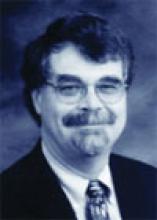Plaintiffs’ lawyers often try to get expert witnesses to acknowledge that “the Diagnostic and Statistical Manual of Mental Disorders is the psychiatrist’s bible, isn’t it, Doctor?” The correct answer is never to acknowledge that anything other than your professional experience and its integration with the literature is authoritative. Medicolegal considerations aside, however, DSM is more like psychiatry’s dictionary than its bible because it is revised every few years.
Fifty years ago—before the American Psychiatric Association and U.S. Public Health Service published DSM I in 1952—psychiatric diagnosis resembled 18th century English language orthography. Prior to Samuel Johnson’s dictionary in 1755, there was no standard spelling; you could spell words any way you felt like. Likewise, before DSM I, there were no standard psychiatric diagnoses.
DSM I was peculiar in many ways. For example, it used the word “reaction” in many diagnoses (e.g., “schizophrenic reaction”), reflecting the underlying assumption of William Menninger, MD, that psychiatric disorders were reactions to environmental stresses.
DSM II (1965) improved on DSM I by being better coordinated with the International Classification of Diseases and by eliminating the “reaction” part of most diagnoses. Unfortunately, it shared with DSM I a very low level of reliability. Each diagnosis included a description of a typical case, and clinicians tried to match patients to whatever diagnosis seemed most similar. Not surprisingly, two well-trained clinicians often could not agree on the diagnosis in any given case. For some diagnoses, psychiatrists showed no better agreement than would be expected by chance.
DSM III (1978) represented a fundamental change, with the now-familiar “check-list diagnoses” (e.g., the patient needs to exhibit five of the following eight symptoms). This approach greatly improved diagnostic reliability. On average, DSM III’s validity (the diagnosis corresponds to a meaningful underlying condition) was probably better, too. DSM III R (1987) and DSM IV (1994) have each tried to improve the diagnoses’ validity, as undoubtedly will DSM V (scheduled for release around 2010).
Several articles in this issue of Current Psychiatry deal with diagnoses we regularly make but that were not included in early DSM editions:
- Borderline personality disorder first appeared as a diagnostic category in DSM III. Kenneth Silk, MD, explains why the debate continues about this diagnosis—and whether it exists at all.
- Attention-deficit/hyperactivity disorder was not recognized as a diagnosis until DSM III, which seemed to include substance abuse as an exclusion criterion. In this issue, Edmund Higgins, MD, discusses antidepressant therapy for adults with both ADHD and substance abuse.
- Social phobia, discussed by Benjamin Yu, MD, et al, also was not legitimized until DSM III.
Other articles in this issue address areas of evolving knowledge. Dr. Pryor Baird’s paper on inducers of the hepatic enzyme cytochrome P-450 system explains this important prescribing problem in a way that I can understand and remember. Dr. Judy Sigmund’s article on pastoral counseling has finally let me understand what that phrase means.
As usual, Current Psychiatry has helped me keep up with our rapidly changing field. I look forward to reading this journal so much each month that if I did not receive it, I would probably develop a “psychoneurotic reaction.”


